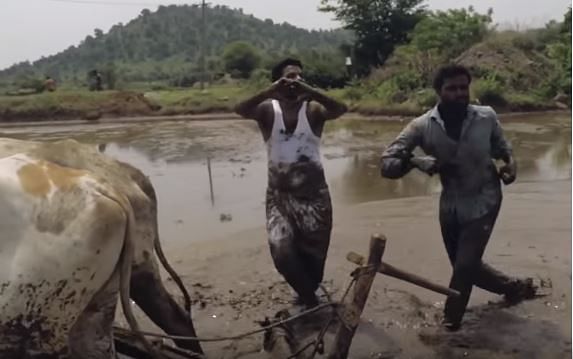Some say its unprecedented popularity is thanks to the “groovy” rhythm, others say it’s a way to grab attention.
New Delhi: Be it farmers tilling a field in Telangana or a middle-aged woman in Gujarat, it seems no one is immune to social media’s latest rage: The Kiki challenge.
It started as a fairly innocuous request by internet comedian Shiggy, who posted a video of himself dancing to a song by rapper Drake (In My Feelings) and asked users to do the same.
But social media’s constant lust for attention has since lent it a dangerous form too – several people have been posting videos of themselves dancing alongside a car after putting the vehicle in slow motion, with at least one performing it while jumping on and off a suburban train in Mumbai.
The challenge went viral in India towards the end of July, and, on 1 August, it was the top Google Trend with half a million searches from India alone.
In fact, police in several states have issued warnings against attempts at its dangerous versions. The question to ask, though, is, how did the challenge, inspired by a song in a tongue alien to most Indians, emerge as the nationwide rage it now is?
Also read: Why restricting social media is not a solution to dangerous behaviour in India
Enhanced access to internet
The main reason for these videos going viral is the massive scale of internet penetration in India. After China, India has the highest number of Internet users in the Asia-Pacific, according to statistics repository Statista.
Reliance Jio’s cheap 4G brought fast internet to millions in rural India, where the Telecom Regulatory Authority of India (TRAI) estimates at least 109 million people owned smartphones in 2017.
Anasua Chatterjee, a sociology professor at Delhi’s Miranda House college, said, “With the increasing penetration of internet in India, you cannot expect these challenges to be limited to a certain strata of society. In fact, the proliferation of smartphones has homogenised the digital culture all over India.”
Srikanth, a YouTuber from Telangana courting international fame for his “desi version” of the challenge, said he didn’t remember why exactly he made the video. In his version of the challenge, which is being celebrated for its simplicity, two farmers soaked in mud are seen dancing as they walk their bullocks through a paddy field.
The video has gained over 177,000 views on Instagram and rave reviews from celebrity netizens.
“I am not sure why we shot the video. I think we were just trying to follow the trend. We don’t even know what the lyrics mean.” Srikanth told ThePrint.
It helped that the dance did not require any special choreography, he added. “The rhythm was so catchy that the farmers spontaneously started dancing to it,” he said.
Music enthusiasts are unanimous that the rhythmic beats of the Drake song are the main reason behind the popularity of the Kiki Challenge.
“The song is really groovy. People can easily pick the song up because the lyrics are simple. One person makes a fun video and everyone else just has to try it,” dancer and blogger Pragyan Behera said.
Also read: Blatant reliance on social media needs to be checked by citizens themselves, says CJI Dipak Misra
The ‘risk takers’
Middle-aged Vadodara resident Rizwana Mir is among those who attempted the moving-car version of the challenge.
Consultant psychologist Mohar Mala Chatterjee attributed this to an “affinity for risks” among people. “These days, people have a tendency of seeking thrill everywhere. This can especially be seen in younger people but the trend can also affect people of different ages, depending on the personality type,” she said.
“The woman from Vadodara is probably ready to take risks in her life. She is striving for something different. Jumping out of the car and dancing gives her a sense of belonging,” Chatterjee added.
Psychiatrist Gaurav Kulkarni was more blunt. “This is a way to get attention and to prove themselves a part of their current social scenario,” he said.
Kuljeet Kaur (76), the former vice-president of NGO All India Women’s Conference, said people needed to give Mir a break.
“The thing about elderly people is that even they want to feel good about themselves. These days, they go to the gym, attend parties and even travel extensively. I am into yoga and travelling. So, I don’t see any problem in taking up internet challenges,” she added.



